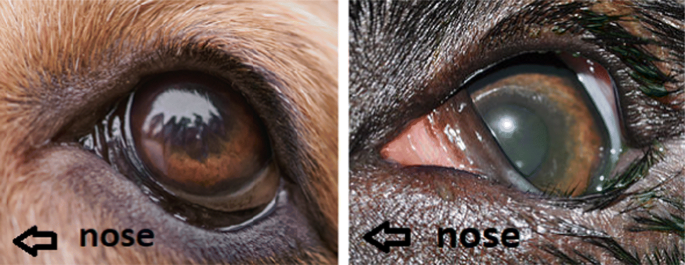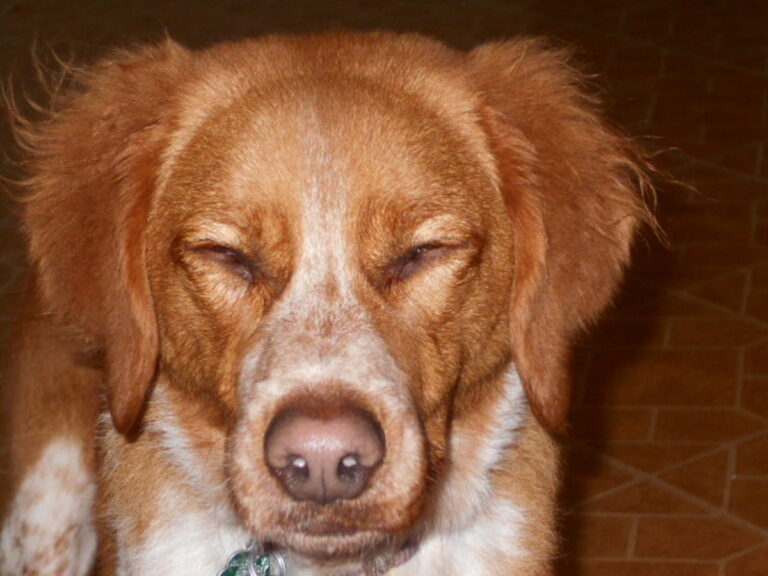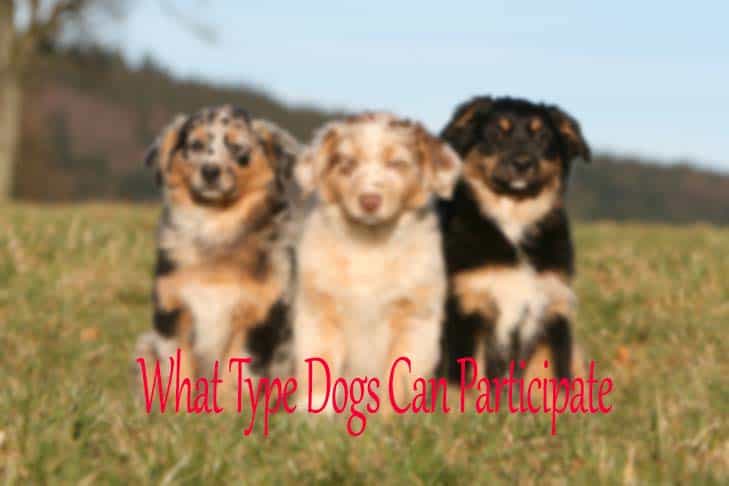Have you ever noticed your furry friend’s third eyelid showing or squinting? Understanding why your dog’s third eyelid is visible and the reasons behind squinting is crucial for their eye health. In this comprehensive guide, we delve into the common causes of dog third eyelid exposure and squinting, ranging from minor irritations to more serious medical conditions. Dogs rely heavily on their keen sense of sight, making any issues concerning their eyes a cause for immediate attention. By gaining insight into these symptoms, you can better protect your pet’s vision and overall well-being. Let’s explore the world of dog eye health together to ensure your loyal companion enjoys a lifetime of clear and healthy vision.
What is a Dog’s Third Eyelid?
A dog’s third eyelid, also known as the nictitating membrane, is a thin, transparent membrane located in the inner corner of the eye. Unlike humans, dogs have this additional eyelid that can move across the eye horizontally to protect and moisten the cornea.
Function of the Third Eyelid
The third eyelid acts as an extra layer of protection for the eye, helping to keep it moist and free from debris. It also contains a gland that produces a significant portion of the dog’s tears, aiding in the lubrication of the eye.
Any abnormalities in the third eyelid, such as showing or squinting, could indicate underlying health issues that need to be addressed promptly.
Possible Causes of Third Eyelid Showing and Squinting
When a dog’s third eyelid is showing or the dog is squinting, it could be a sign of various conditions such as eye infections, trauma, allergies, or even more severe problems like glaucoma or tumors.
- Eye Infections
- Allergies
- Tumors

Functions of a Dog’s Third Eyelid
A dog’s third eyelid, also known as the nictitating membrane, serves several important functions in maintaining your pet’s eye health. This translucent, protective eyelid acts as a shield, protecting the eyes from dust, debris, and other foreign particles that could potentially cause irritation or injury.
Moisturizing the Eyes
The third eyelid contains glandular tissue that produces a portion of the eye’s tears, helping to keep the eyes lubricated and moist. This is crucial for maintaining proper eye health and preventing dryness that could lead to discomfort or vision problems.
Defending Against Infections
In addition to providing physical protection, the third eyelid has immune functions that aid in defending the eyes against infections and diseases. It contains cells that help fight off potential pathogens, contributing to the overall health of your dog’s eyes.
Reasons for Your Dog’s Third Eyelid Showing
When you notice your dog’s third eyelid showing and squinting, it can be concerning. There are several reasons why this may occur, and understanding the potential causes can help you address the issue promptly.
Eye Infections
One common cause of a visible third eyelid in dogs is an eye infection. Bacterial or viral infections can lead to inflammation and irritation, causing the third eyelid to protrude. If you observe discharge or redness in your dog’s eyes, consult your veterinarian immediately.
Eye Trauma
Eye trauma can also result in a dog’s third eyelid being visible. Accidental injuries or scratches to the eye can disrupt the normal position of the eyelid, leading to squinting and increased visibility of the third eyelid. Seek prompt veterinary care if your dog has experienced any form of eye trauma.
Underlying Health Conditions
Some underlying health conditions, such as uveitis or glaucoma, can manifest as a protruding third eyelid. These systemic issues can affect your dog’s eye health and overall well-being. Regular check-ups with your veterinarian can help detect and manage such conditions.
Understanding Why Your Dog is Squinting
If you notice your dog’s third eyelid showing and squinting, it can indicate various underlying issues that require attention. Squinting in dogs can be a sign of discomfort, pain, or eye problems that need prompt evaluation by a veterinarian.
Possible Causes of Squinting in Dogs
Dogs may squint due to eye irritation, foreign bodies, allergies, infections, corneal ulcers, or ocular trauma. These can lead to discomfort and the natural response of squinting to protect the eye.
It could also be a symptom of underlying health issues such as glaucoma, uveitis, or dry eye syndrome.
What to Do If Your Dog is Squinting
If your dog is squinting, schedule a vet appointment, especially if there are other concerning symptoms like discharge, redness, or swelling. Avoid attempting any home remedies without professional advice.
- Keep the affected eye clean and free from any discharge.
- Protect your dog’s eyes from further irritation or injury.
Treatment Options for Dogs with Third Eyelid Showing and Squinting
When a dog displays symptoms like third eyelid showing and squinting, it indicates an underlying issue that requires prompt attention. Here are the treatment options to address this problem:
1. Veterinary Examination
First and foremost, schedule a visit to a veterinarian specializing in ophthalmology to diagnose the root cause of the symptoms. A thorough examination will determine the appropriate course of action.
Visiting the vet promptly is crucial for effective treatment, as delaying may lead to complications especially common in cases of eye-related issues.
2. Medication and Eye Drops
Based on the diagnosis, the vet may prescribe medications or eye drops to alleviate the symptoms. These can help reduce inflammation, relieve pain, or treat infections effectively.
- Follow the dosage instructions provided by the vet meticulously to ensure the medication’s effectiveness.
- Regularly administer the eye drops as prescribed for the best results.
Preventive Measures to Keep Your Dog’s Eyes Healthy
Ensuring your dog’s eyes are healthy is crucial for their overall well-being. Here are some preventive measures you can take to maintain your dog’s ocular health:
Regular Eye Exams
Schedule regular check-ups with your veterinarian to detect any eye problems early. Early detection is key to preventing serious issues.
Proper Nutrition
Provide a balanced diet rich in vitamins A, C, and E to promote eye health. Consider including foods like carrots and blueberries in your dog’s diet.
Eye Hygiene
Clean your dog’s eyes gently with a damp cloth to remove any debris or discharge. Use vet-approved eye drops if necessary.
Protection from UV Rays
Avoid exposing your dog to direct sunlight for extended periods. Consider using sunglasses specifically designed for dogs to protect their eyes.
Frequently Asked Questions
- What is a dog’s third eyelid?
- A dog’s third eyelid, also known as the nictitating membrane, is a transparent or translucent third eyelid located in the inner corner of their eye.
- Why is my dog’s third eyelid showing?
- Your dog’s third eyelid may be showing due to various reasons such as eye irritation, injury, illness, or it could be a sign of an underlying health issue.
- Why is my dog squinting?
- If your dog is squinting, it could be due to discomfort, pain, eye irritation, injury, or a foreign object in the eye. It is essential to have your vet examine your dog if they are squinting.
- When should I be concerned about my dog’s third eyelid showing and squinting?
- If your dog’s third eyelid is showing or they are squinting persistently, it is recommended to seek veterinary advice promptly as it could be a sign of an underlying eye problem or health issue.
- How can I prevent my dog’s third eyelid from showing and squinting?
- To prevent your dog’s third eyelid from showing and squinting, ensure they have regular check-ups with the vet, maintain proper eye hygiene, keep foreign objects away from their eyes, and address any potential eye irritations promptly.
Final Thoughts
Understanding why your dog’s third eyelid is showing and why they may be squinting is crucial for their overall health and well-being. These symptoms can indicate various underlying issues, including eye infections, injuries, allergies, or more serious conditions that require immediate veterinary attention.
By being observant of your dog’s behavior and any changes in their eyes, you can promptly address any concerns and seek the necessary medical care. Remember, your furry friend’s eyes are delicate and should not be ignored. Regular check-ups with your veterinarian can help prevent any serious complications and ensure your dog’s eyes remain healthy.
Always prioritize your dog’s eye health and seek professional advice if you notice persistent third eyelid showing or squinting. Your vigilance could make a significant difference in maintaining your dog’s vision and overall quality of life.



